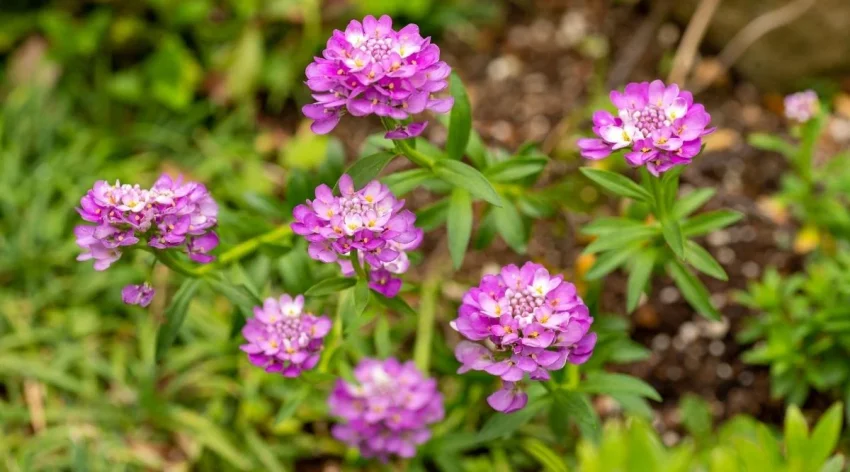langerhanscellhistiocytosis.org – The Candytuft (Iberis sempervirens) is a charming and versatile flower that has become a favorite among gardeners for its delicate beauty and ease of growth. Known for its clusters of bright white blooms and evergreen foliage, Candytuft adds a lovely splash of color to gardens, rock walls, and borders. It’s a low-maintenance plant that brings both elegance and year-round appeal to any outdoor space. Let’s take a closer look at what makes Candytuft so special.
Botanical Description
Candytuft is a perennial flowering plant that belongs to the mustard family (Brassicaceae). Growing up to 12 inches tall and spreading out with a bushy, low-growing habit, it forms dense mats of glossy, dark green leaves. The most striking feature of Candytuft is its flower clusters. These small, fragrant blooms are typically white, although some varieties also come in shades of pink or lavender. The flowers appear in early spring and often bloom again in the fall, making this plant a long-lasting beauty in the garden.
Its compact growth and dense flower clusters make Candytuft a favorite for creating beautiful borders or as a ground cover in sunny areas.
Habitat and Growth Conditions
Native to southern Europe, Candytuft thrives in sunny, well-drained environments and is particularly well-suited to Mediterranean-like climates. It prefers full sun but can tolerate partial shade, especially in warmer climates. The plant grows best in neutral to slightly alkaline soil that drains well, as it does not tolerate soggy conditions. It’s a drought-tolerant plant once established, making it a perfect addition to low-maintenance and xeriscape gardens.
Candytuft is hardy in USDA zones 3 to 9, meaning it can survive in a wide range of climates. It’s an ideal plant for rock gardens, raised beds, and along slopes where good drainage is assured.
Ecological Importance
Candytuft is a valuable plant for pollinators such as bees and butterflies. Its long-lasting blooms provide a nectar source for these important creatures throughout the growing season. Though not native to North America, Candytuft can play a role in supporting local ecosystems when planted in gardens. The dense foliage also serves as cover for small insects and beneficial ground-dwelling creatures.
Cultivation and Care
One of the best qualities of Candytuft is how easy it is to grow and care for. It is usually propagated by seeds or cuttings. For best results, plant it in the spring or fall when temperatures are mild, allowing the roots to establish before harsher weather conditions set in.
Candytuft requires very little maintenance. It needs occasional watering during dry spells, but it’s important to avoid overwatering, as this can lead to root rot. Pruning back the plant after its first bloom in spring will encourage fresh growth and possibly a second bloom in late summer or fall. Trimming the plant also helps maintain its tidy shape.
Candytuft does well in poor to moderately fertile soils, so fertilization is not usually necessary. However, adding compost or organic matter to the soil before planting can improve its performance.
Ornamental Uses
Candytuft’s compact size and profusion of blooms make it an excellent plant for ornamental purposes. It’s commonly used as a border plant along walkways, in rock gardens, or as a ground cover on slopes. Its bright white flowers create a striking contrast when planted alongside more colorful flowers, making it a versatile addition to mixed garden beds.
Because of its evergreen foliage, Candytuft continues to add texture and visual interest to gardens even during the colder months when other perennials have died back. It’s often planted near retaining walls or cascading over the edges of raised beds, where its flowers can spill gracefully over the edges.
Conclusion
With its delicate white blooms and evergreen leaves, Candytuft is a versatile and easy-to-grow plant that adds beauty to any garden year-round. Whether used as a ground cover, border plant, or in rock gardens, its long-lasting flowers and low-maintenance nature make it a popular choice among both novice and experienced gardeners. If you’re looking for a plant that offers seasonal interest and supports pollinators, Candytuft may be the perfect addition to your outdoor space.

